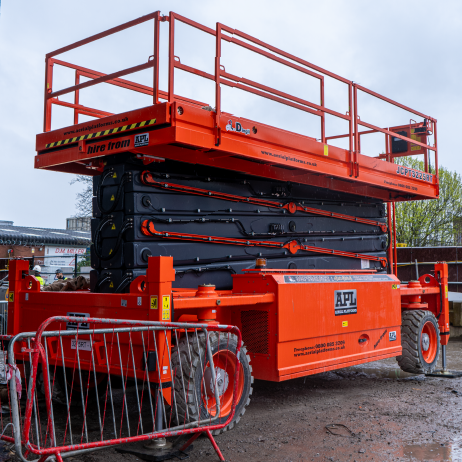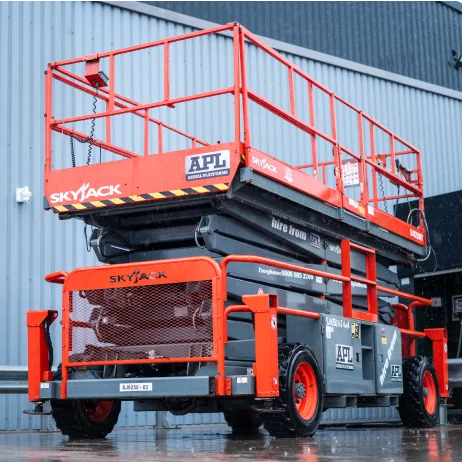
Diesel Scissor Lifts are well-suited for a variety of tasks. Their value is recognised in several industries due to their reliable power, safety features, and adaptability.
Opting for a diesel scissor lift can enhance your project’s productivity, providing a solid solution for your operational needs.
OPEN ACCOUNTFor many modern projects that require a dependable and versatile solution, Diesel Scissor Lifts are often the go-to choice.
These machines combine power with functionality, ensuring efficiency, safety, and consistent performance.
Explore the key benefits of diesel scissor lifts:
Powerful Performance
Versatility in Terrain
Higher Load Capacity
Longer Operation Times
Extended Reach

In the discussion of choosing between a diesel and an electric scissor lift, there are persuasive arguments for selecting diesel models.
At the core of the argument is the robust power and performance diesel lifts offer.
Diesel scissor lifts excel when it comes to longer operation cycles. Unlike their electric counterparts, which require periodic recharging, diesel lifts can operate continuously for extended periods, making them appropriate for demanding projects that can’t afford downtime.
A standout benefit of diesel models is their adaptability to various terrains. Especially in outdoor environments that might involve rough or uneven grounds, the rugged design of diesel scissor lifts is unparalleled. Their resilience ensures consistent performance, irrespective of the challenges the terrain presents.
Additionally, diesel variants have an enhanced load-carrying capability. This positions them as the preferred choice for handling weightier equipment or supporting additional personnel, guaranteeing streamlined project execution.
For refuelling, diesel is widely available, even in more isolated areas, ensuring consistent operations. On the other hand, electric versions often demand dedicated charging points or stations.

Choosing the right diesel scissor lift for your project is important. The best equipment ensures both efficiency and safety.
Here’s a guide to assist you in your decision-making:
Height Requirements
Determine the exact vertical height you’ll need for your tasks. It’s a good practice to select a lift that slightly exceeds your anticipated requirements, ensuring you’re covered for any unforeseen needs.
Weight Capacity
Evaluating the total weight the lift will need to support is paramount. This includes the weight of personnel, tools, and any materials. Remember, overloading can be a safety hazard.
Platform Size
The platform should be large enough to accommodate the workers and their tools comfortably. Additionally, it should provide enough space for movement.
Terrain Adaptability
The selected diesel scissor lift should be suitable for the terrain where it will be used. Not all lifts are designed to operate on uneven or unstable grounds.
Manoeuvrability and Size
One of the primary considerations should be how nimble and adaptable the scissor lift is, especially when navigating through tighter spaces or around obstacles.
Environmental Impact
Diesel lifts, while powerful, do have a more significant environmental footprint compared to electric versions.
Diesel scissor lifts are a popular choice for several industries that require height-based tasks to be done safely.
Here’s a look at some sectors that utilise them: